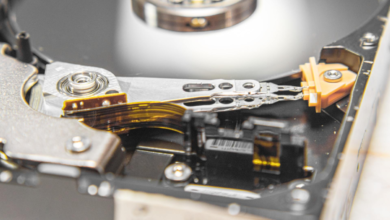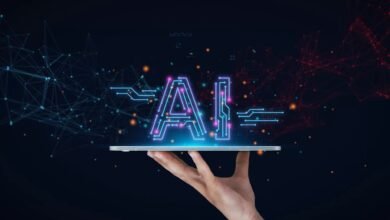How AI Is Being Used in American Law Enforcement
AI in American law enforcement is transforming policing with predictive analytics, facial recognition, and crime prevention. Learn how AI enhances.

Artificial Intelligence (AI) is transforming American law enforcement by enhancing efficiency, accuracy, and public safety. From predictive policing to facial recognition, AI-powered tools are being deployed to assist officers in crime prevention, investigation, and resource allocation. While these advancements promise significant benefits, they also raise ethical concerns regarding privacy, bias, and accountability. This article explores the various applications of AI in policing, its advantages, challenges, and the ongoing debate surrounding its use. As AI technology evolves, its integration into American Law enforcement will continue to expand, necessitating a careful balance between innovation and civil liberties.
Artificial Intelligence (AI) is rapidly transforming American law enforcement, offering innovative tools to enhance public safety, streamline investigations, and optimize resource allocation. From predictive policing algorithms to facial recognition systems, AI is reshaping how crimes are prevented, detected, and solved. While these advancements promise greater efficiency and accuracy, they also raise critical ethical concerns, including privacy violations, algorithmic bias, and accountability issues. This article explores the various applications of AI in policing, its benefits, challenges, and the ongoing debate over its regulation.
How AI Is Being Used in American Law Enforcement
The Expanding Role of AI in American Law Enforcement
Artificial Intelligence has become an integral part of modern policing, offering tools that improve decision-making, streamline investigations, and enhance public safety. One of the most prominent applications is predictive policing, where AI algorithms analyze historical crime data to forecast potential criminal activity. Systems like PredPol and HunchLab help American Law enforcement allocate resources more effectively by identifying high-risk areas.
Facial recognition technology
Another key use of AI is facial recognition technology, which allows police to identify suspects by comparing images against databases. Agencies like the FBI and local police departments use software such as Clearview AI to solve crimes ranging from theft to violent offenses. Despite its effectiveness, facial recognition has faced backlash over privacy violations and inaccuracies, particularly in misidentifying people of color. Some cities, including San Francisco and Boston, have banned its use by government agencies due to these concerns.
Crime Analysis and Forensic Investigations
AI also plays a crucial role in crime analysis and forensic investigations. Machine learning models can process vast amounts of data, such as surveillance footage, social media activity, and criminal records, to detect patterns that human analysts might miss. For example, ShotSpotter uses AI-powered acoustic sensors to detect gunfire and alert police in real-time, reducing response times. Similarly, digital forensics tools leverage AI to recover deleted files, analyze encrypted communications, and track cybercriminals.
Traffic Monitoring and Accident Prevention
In addition to reactive measures, AI assists in traffic monitoring and accident prevention. Smart cameras equipped with AI analyze traffic flow, detect violations like speeding or red-light running, and even predict accident-prone zones. Automated license plate readers (ALPRs) help track stolen vehicles and identify suspects in criminal cases. These technologies improve road safety but also raise concerns about mass surveillance and data retention policies.
Administrative and Operational Efficiency
Beyond crime-fighting, AI supports administrative and operational efficiency in law enforcement. Chatbots and virtual assistants handle non-emergency calls, freeing up officers for critical tasks. Natural language processing (NLP) tools transcribe body camera footage and police reports, reducing paperwork. AI-driven risk assessment tools are also used in bail and parole decisions, though debates persist over their fairness and transparency.
Ethical
Despite its benefits, AI in American Law enforcement presents significant ethical dilemmas. Algorithmic bias remains a major issue, as AI systems trained on biased data may perpetuate discrimination. Studies have shown that some predictive policing tools target minority neighborhoods at higher rates, leading to over-policing. Similarly, facial recognition system errors have resulted in wrongful arrests, particularly among Black and Hispanic individuals there is no comprehensive federal American Law governing AI use in policing.
Algorithmic bias
Algorithmic bias is perhaps the most pressing concern, as AI systems trained on biased data can amplify existing inequalities. For example, if predictive policing algorithms rely on arrest records from neighborhoods that have been historically over-policed, they may unfairly target those same areas, creating a cycle of discrimination. Similarly, facial recognition errors have led to wrongful arrests, particularly among Black and Latino individuals, highlighting the dangers of relying on flawed technology for critical decisions.
Legal Challenges
Privacy concerns are another critical challenge. The widespread use of surveillance AI, including drones and social media monitoring tools, has sparked debates over Fourth Amendment rights. Civil liberties advocates argue that unchecked AI surveillance creates a “Big Brother” scenario, eroding public trust in American Law enforcement. Legal frameworks have struggled to keep pace with AI advancements. While some states have introduced regulations on facial recognition and predictive policing.
Privacy concerns
Privacy concerns are another major issue, as AI-driven surveillance tools collect vast amounts of personal data. The proliferation of facial recognition cameras, social media monitoring software, and geofence warrants (which track individuals’ locations via smartphone data) has sparked debates over Fourth Amendment protections against unreasonable searches. Civil rights organizations argue that unchecked surveillance erodes trust in law enforcement and threatens democratic freedoms.
The Future of AI in Policing
As AI technology evolves, its applications in law enforcement will grow more sophisticated. Future developments may include real-time crime centers where AI integrates data from multiple sources cameras, sensors, social media to provide instant insights. Autonomous police drones and robots could assist in dangerous situations, reducing risks to officers. However, the success of AI in policing depends on addressing its ethical and legal challenges.
AI decision-making
Stricter regulations, bias mitigation strategies, and transparency in AI decision-making are essential to ensure fairness. Public trust will also play a crucial role law enforcement agencies must engage communities in discussions about AI deployment to balance security with civil rights. However, critics argue that these systems may reinforce biases if trained on historically skewed data, disproportionately targeting marginalized communities.
Read More: How to Balance Tech Use and Mental Health
Conclusion
AI is reshaping American law enforcement, offering powerful tools to combat crime while raising important ethical questions. Predictive policing, facial recognition, and forensic analysis demonstrate AI’s potential to enhance public safety, but concerns over bias, privacy, and accountability cannot be ignored. As technology advances, finding the right balance between innovation and regulation will be crucial.
The future of AI in policing depends on responsible implementation. American Law enforcement agencies must prioritize transparency, fairness, and public trust to ensure that AI serves as a force for good rather than a tool for discrimination. Policymakers, technologists, and communities must work together to establish guidelines that protect both security and civil liberties in an increasingly AI-driven world.
FAQs
How does AI help in predictive policing?
AI analyzes historical crime data to predict where and when crimes are likely to occur, helping police allocate resources more efficiently.
What are the risks of facial recognition in American Law enforcement?
Facial recognition can misidentify individuals, especially people of color, leading to wrongful arrests and privacy violations.
Can AI reduce bias in policing?
While AI has the potential to reduce human bias, it can also perpetuate existing biases if trained on flawed or discriminatory data.
How is AI used in traffic enforcement?
AI-powered cameras monitor traffic violations, detect accidents, and analyze patterns to improve road safety.
What laws regulate AI in American law enforcement?
Currently, there is no federal law specifically governing AI in policing, though some states have imposed restrictions on facial recognition and predictive policing.










